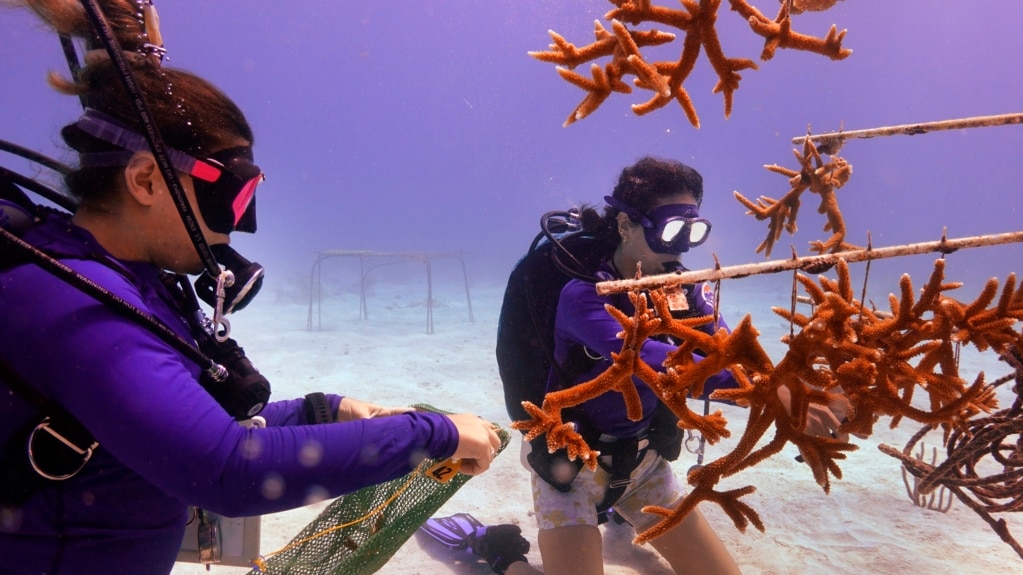Several organizations are racing to save the reef that runs along the Florida Keys.
A summer heat wave has already led to historic coral bleaching. Coral bleaching is the process by which coral becomes white because of high water temperatures or pollution.
Up and down the islands that form the Florida Keys, coral rescue groups, universities and the government are working to save the coral. Experts say the bleaching event threatens the health of the third-largest reef area in the world. They have been working long days for many weeks to get as much coral as they can onto land.
In mid-July, water surface temperatures averaged 33 degrees Celsius off the lower Florida Keys. That is well above the average of 29.5 degrees, says the National Oceanic and Atmospheric Administration, or NOAA.
The hot water resulted in nearly 100 percent bleaching along some parts of the reef. The bleaching caused the corals to lose their zooxanthellae. That is the algae that gives them color and nutrition. If they do not recover their zooxanthellae, they will die.
“We’re already seeing not just bleaching, but actual coral death out on the reef because the temperatures were so hot,” said Cynthia Lewis. She is director of the Keys Marine Lab, a research institute on the island of Long Key, about 160 kilometers south of Miami.
In Miami, rescue groups have already brought more than 1,500 pieces of coral.
Coral bleaching happens naturally when waters warm greatly. It happened in 2016 in the Florida Keys. But Lewis said the current situation is urgent for coral, which is very important to Florida’s economy, coastal protection and marine life.
Recent cloudy and rainy days helped lower water temperatures slightly. But it will likely be late October or November before the coral samples can be returned to the reef, Lewis said.
The Florida Coral Reef stretches about 563 kilometers from the Dry Tortugas in the Gulf of Mexico to St. Lucie Inlet, about 185 kilometers north of Miami.
The reef is a first line of defense against coastal erosion and flooding from storms, Lewis said. It helps support fishing and the tourism industry. Coral also contains “such an amazing amount of diversity and life” in the ocean around them, Lewis added.
Reef Renewal is a group that has worked to move endangered coral into land-based centers. More recently, the group has worked to save coral in several of their own underwater facilities in shallower water by moving them to deeper, cooler water.
Reef Renewal founder Ken Nedimyer called the coral bleaching “hard to watch and hard to experience.” He said his group knew that coral stress would increase under climate change. But he and others did not think it would happen so soon.
Back at the Keys Marine Lab on Long Key, the collected pieces of coral are put in cooling containers that hold between 40 and 400 gallons of seawater. The 29-degree water makes for “much happier coral,” said marine biologist Emily Becker.
The work goes beyond saving the coral. Becker and others are studying different kinds of coral to see which ones survive temperature stress and disease better. They hope to "build a better reef with more resilient corals,” she said.
Scientists from the University of Miami have created a research site off of Key Biscayne to do such work.
Jamison Gove is the co-writer of a new article in Nature about how Hawaii coral reefs survived a 2015 ocean heat wave.
The oceanographer said reefs that returned best after Hawaii’s heat wave were those that had both the most fish and the least sewage. But he said local efforts will not save reefs if people do not reduce greenhouse gas emissions.
I’m Dan Novak.

